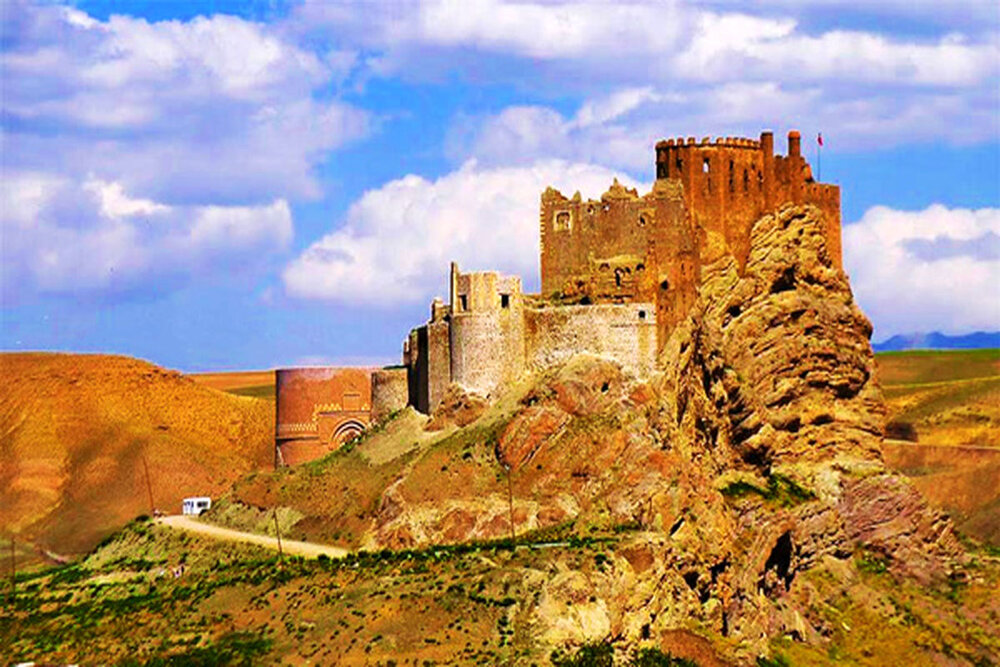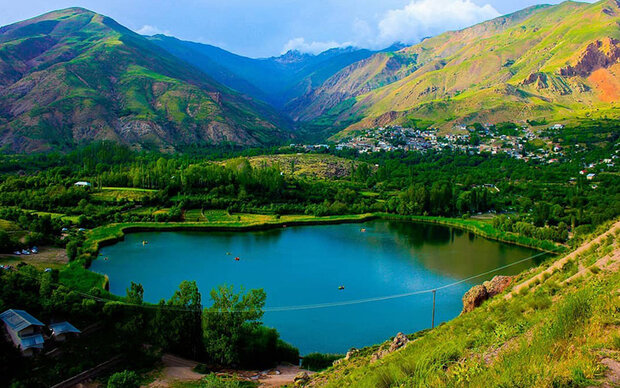Historically-rich Alamut possesses great capacity for tourism: official

TEHRAN—The historical region of Alamut has a great capacity for sightseeing and tourism, Qazvin’s governor-general said on Thursday.
“We believe that Alamut is the advantage of Qazvin’s tourism and proper planning, and more attention to this area can lead to its growth and development at the national and provincial levels,” Mohammad-Mehdi Alaei said.
The official announced plans to address issues that can help promote tourism in the region, adding “Necessary planning will be carried out, which we hope will lead to fundamental changes in the tourism arena.”
Elsewhere in his remakes, the official talked about an under-construction road, which will connect Alamut to Tonekabon in the coastal Mazandaran province.
“The Qazvin-Almut-Tonekabon project has been slow since 2017, but based on a presidential address, it will be completed more quickly.”

“We hope to solve Alamut’s problems in various fields, including agricultural and potable water, cultural heritage, tourism, health clinics.”
"Alamut has a great capacity in the field of tourism, and the people and officials should stand together to bring economic prosperity to the region by developing tourism.”
The valleys of Assassins, a drive back in time
One of the most astounding pieces of Iran's Qazvin region, the valleys of Assassins were once the spine of Hasan-e Sabbah (1070–1124) and his followers as remnants of their history are everywhere, hiding in the ancient sight.
In the 1930s, British-Italian explorer and travel writer Freya Stark described her exploration of the place in her book “The Valleys of the Assassins.”
Alamut is famed for a well-fortified castle nested on top of a hill, once sheltering the followers of Sabbah, who was the spiritual leader of a heretical Ismaili sect, known as ‘Assassins.’ Narratives say Sabbah led a bizarre, much-feared mercenary organization whose members were dispatched to murder or kidnap leading political and religious figures of the day.
Narratives say that the name Alamut, which means “eagle’s nest”, is associated with a regional 8th-century king who spied an eagle landing amid its rugged lofty crags and was inspired to build an impregnable fortress.
The ruined structure, better known as Alamut Castle, is now a top travel destination for both domestic and international sightseers. The castle is situated on the northeastern side of Gazor Khan village in the environs of Mo’alem Kalayeh.
Sandwiched between the dry and barren plain of Qazvin in the south and the densely forested slopes of the Mazandaran province in the north, the site, also known as Alamut, draws many travelers with particular objectives in mind: to find the past in the present, to learn about other cultures, to have a breath of fresh air, or simply to get some distance from work, to cite a few.
To reach the castle, you should pass for nearly half along a narrow road surrounded by cherry and pomegranate orchards, until a mass of gray-brown rock looms from the distance with fortifications perched atop a summit.
Assassins believed their actions would transport them to paradise. Supposedly, Sabbah cunningly cultivated such beliefs by getting his followers stoned on hashish (unbeknown to them) and then showing them beautiful secret gardens.
This notion, however, gave the sect its popular name ‘Hashish-iyun’, the root of the modern English term ‘assassin.’ Or so the story goes. Peter Willey’s book, Eagle’s Nest, gives an altogether more sympathetic version, portraying Sabbah as a champion of the free-thinking, pro-science Islamic tradition and suggesting that the hashish tales were exaggerations designed to denigrate Ismaili Islam.
The castle was captured by Mongol ruler Hulagu Khan in 1256 using diplomatic trickery, having earlier forced the surrender of the Ismailis’ spiritual leader (Sabbah’s successor).
Sabbah’s rule from Alamut (which he renamed the City of Good Fortune) is shrouded in mystery and enigma. This is partly because most Ismaili records of the era were destroyed by the invading Mongols while the writings of their detractors survived.
For centuries, Alamut castle was almost forgotten and only returned to public consciousness with the publication of Stark’s 1930s travel diary, Valleys of the Assassins. A copy of that recently reprinted volume makes a great companion for the trip.
AM
